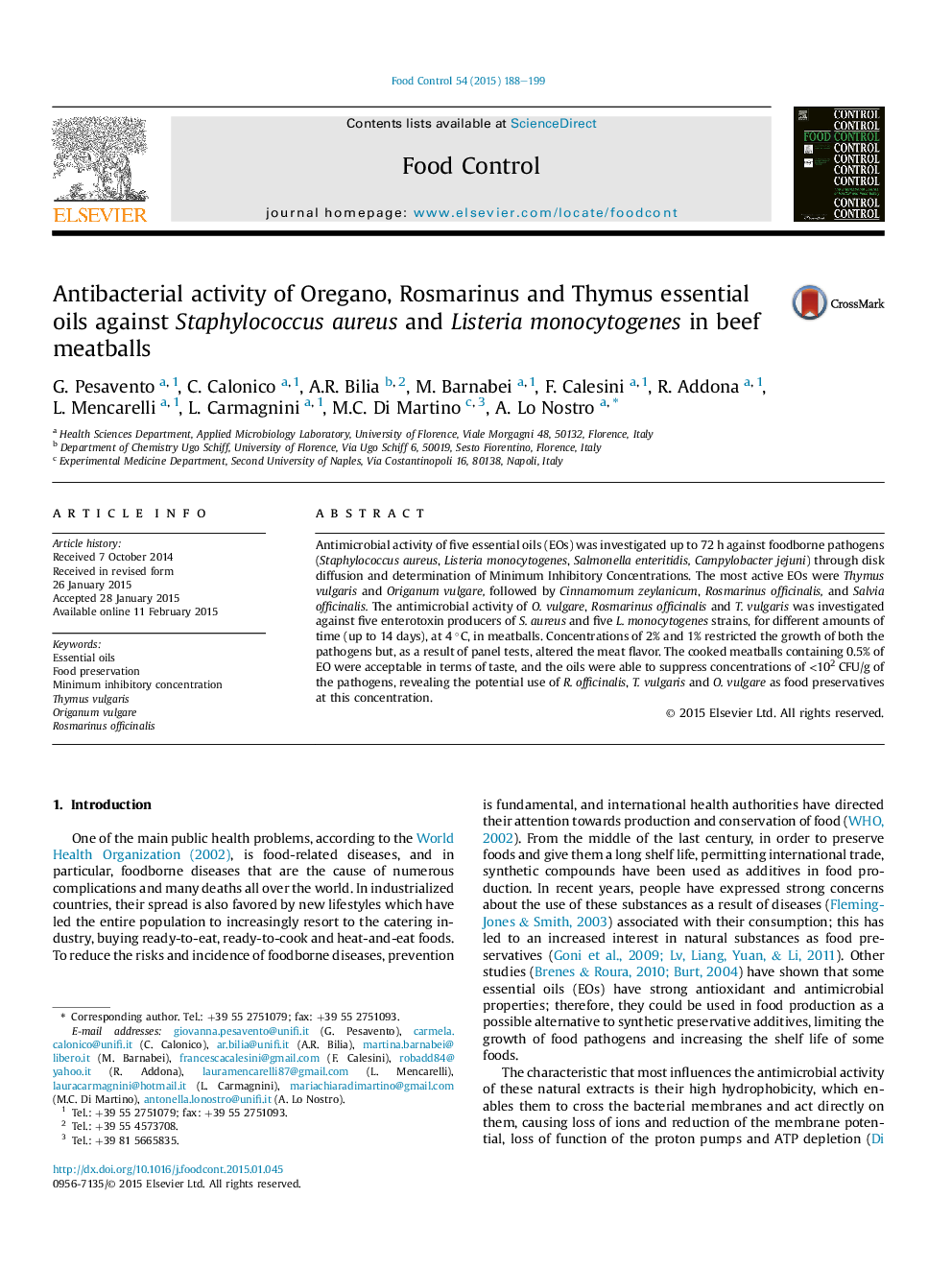| Article ID | Journal | Published Year | Pages | File Type |
|---|---|---|---|---|
| 6390853 | Food Control | 2015 | 12 Pages |
â¢EOs activity was examined against foodborne pathogens through disk diffusion and MIC.â¢EOs were investigated against Staphylococcus aureus and Listeria monocytogenes in raw meatballs at 4 °C.â¢Antimicrobial activity was investigated for different amounts of time up to 14 days.â¢2%, 1% EO restricted growth of pathogens but altered meat flavor (panel test results).â¢0.5% EO Cooked meatballs were acceptable taste, oil suppressed pathogens (<102 CFU/g).
Antimicrobial activity of five essential oils (EOs) was investigated up to 72 h against foodborne pathogens (Staphylococcus aureus, Listeria monocytogenes, Salmonella enteritidis, Campylobacter jejuni) through disk diffusion and determination of Minimum Inhibitory Concentrations. The most active EOs were Thymus vulgaris and Origanum vulgare, followed by Cinnamomum zeylanicum, Rosmarinus officinalis, and Salvia officinalis. The antimicrobial activity of O. vulgare, Rosmarinus officinalis and T. vulgaris was investigated against five enterotoxin producers of S. aureus and five L. monocytogenes strains, for different amounts of time (up to 14 days), at 4 °C, in meatballs. Concentrations of 2% and 1% restricted the growth of both the pathogens but, as a result of panel tests, altered the meat flavor. The cooked meatballs containing 0.5% of EO were acceptable in terms of taste, and the oils were able to suppress concentrations of <102 CFU/g of the pathogens, revealing the potential use of R. officinalis, T. vulgaris and O. vulgare as food preservatives at this concentration.
